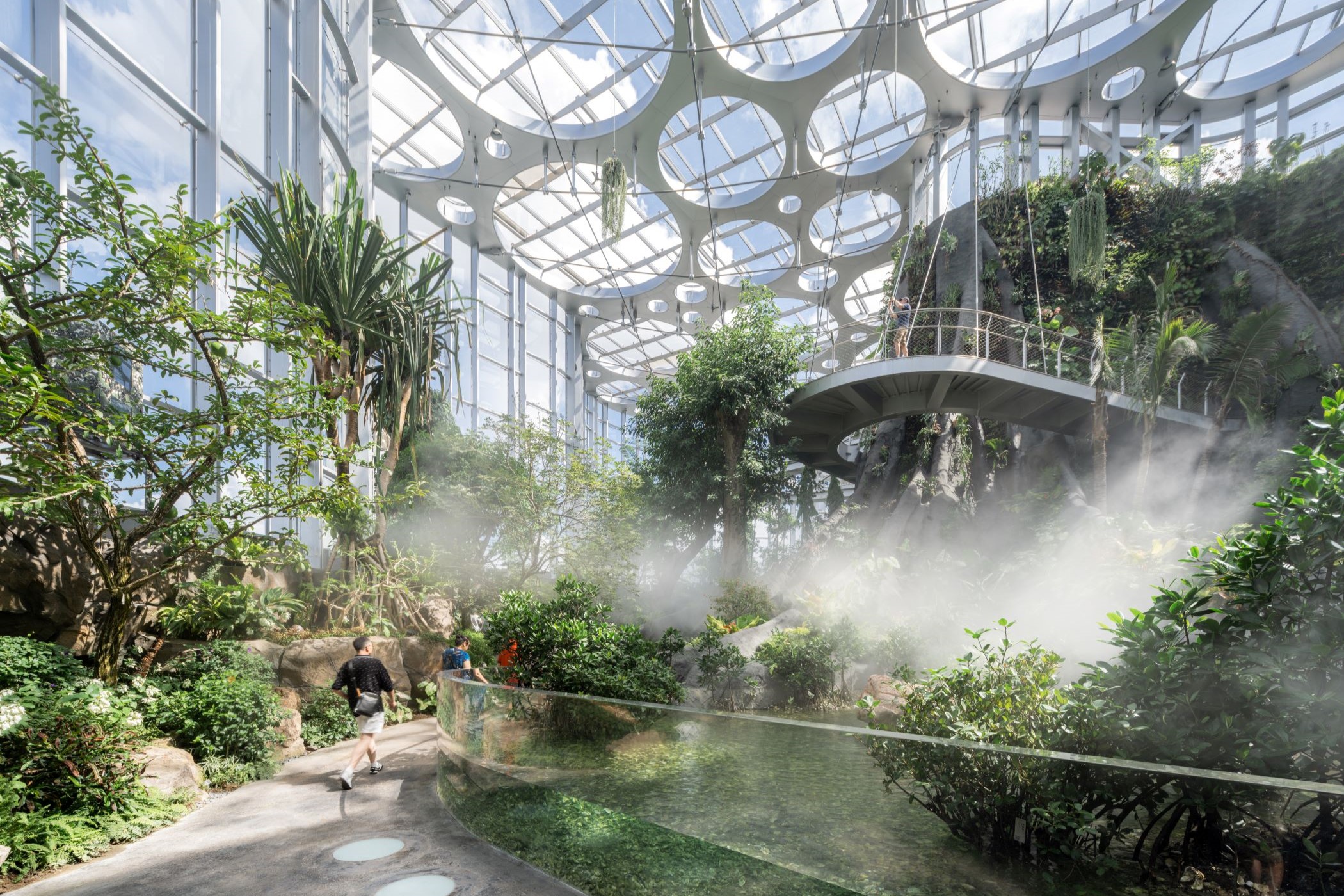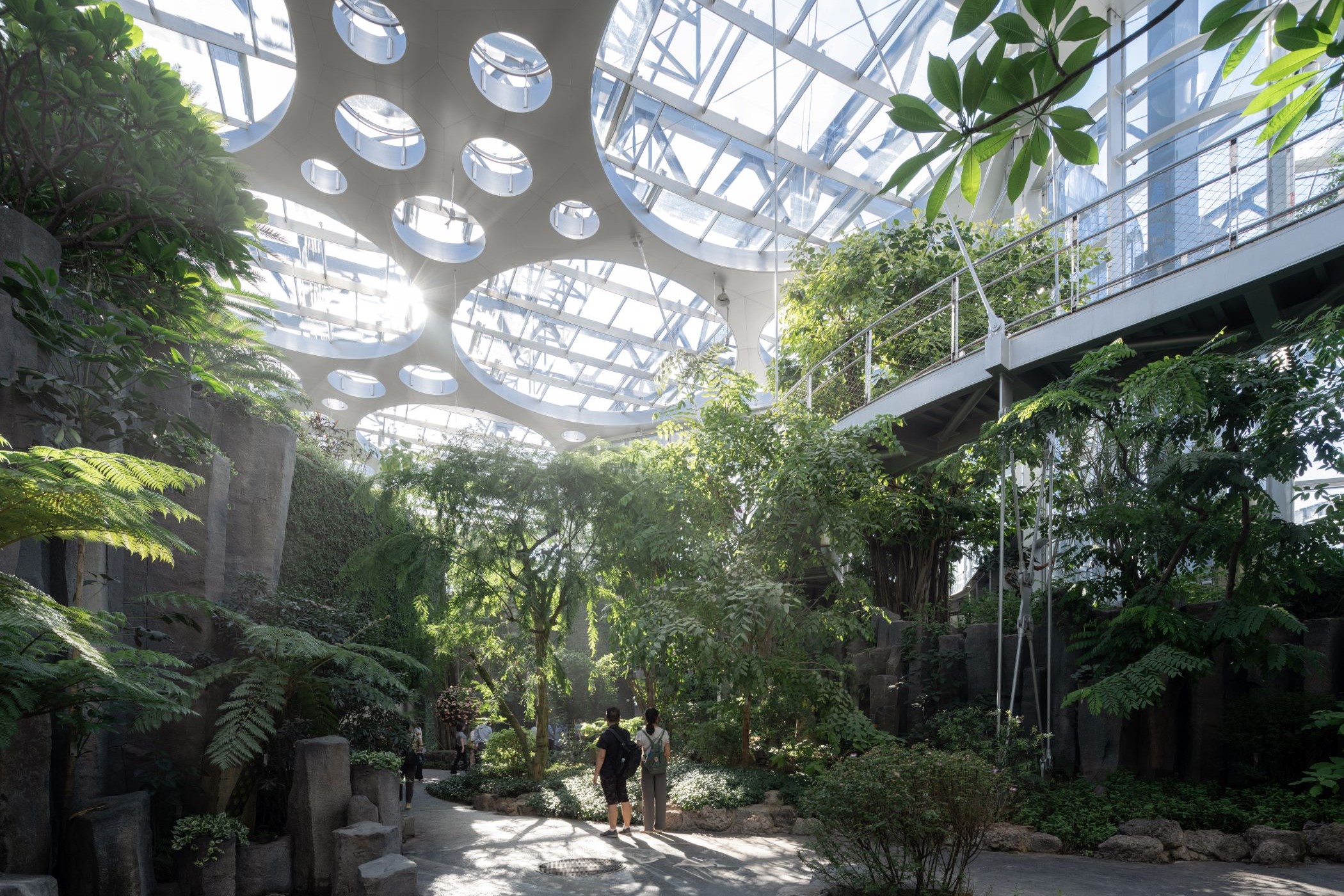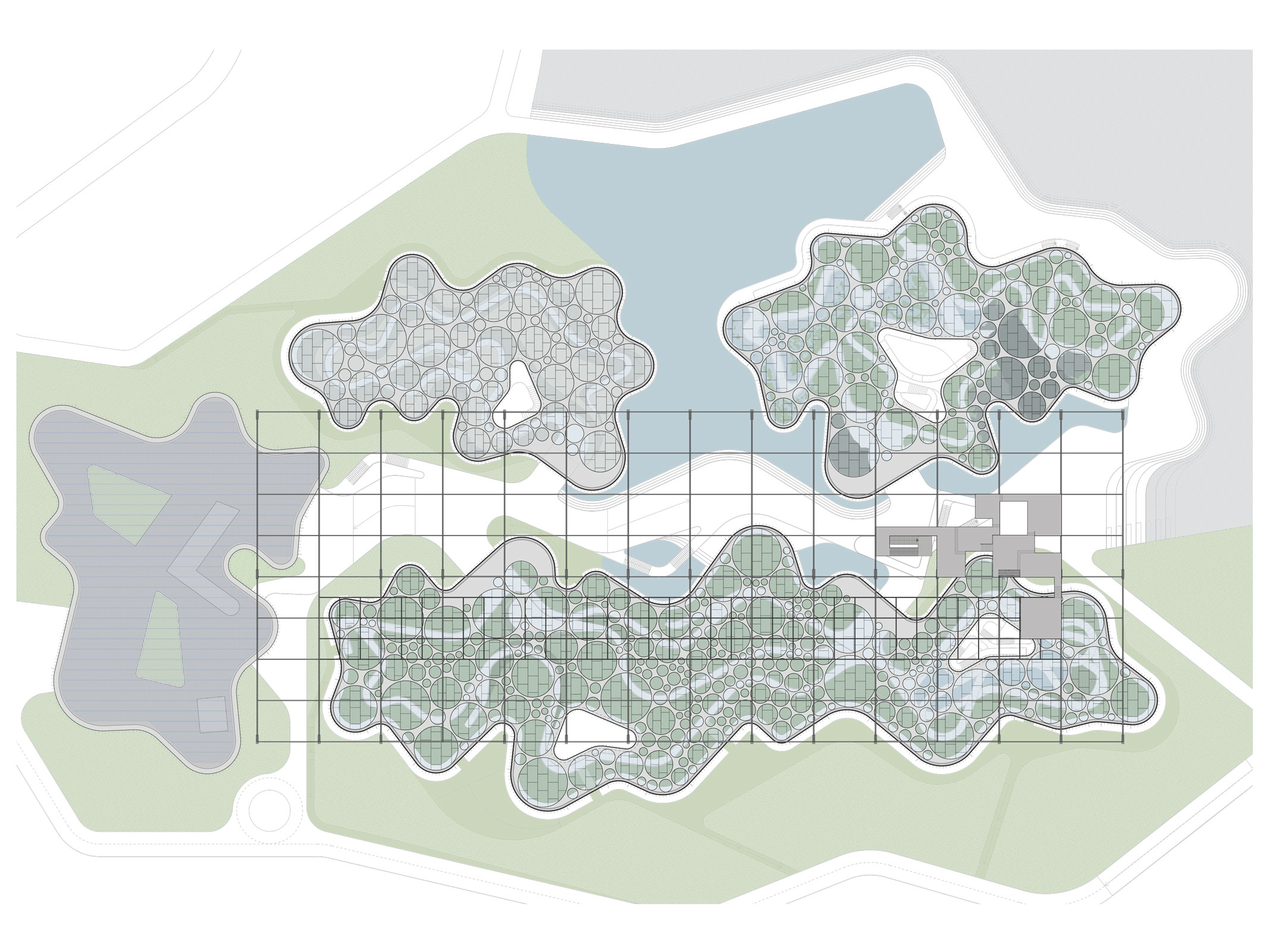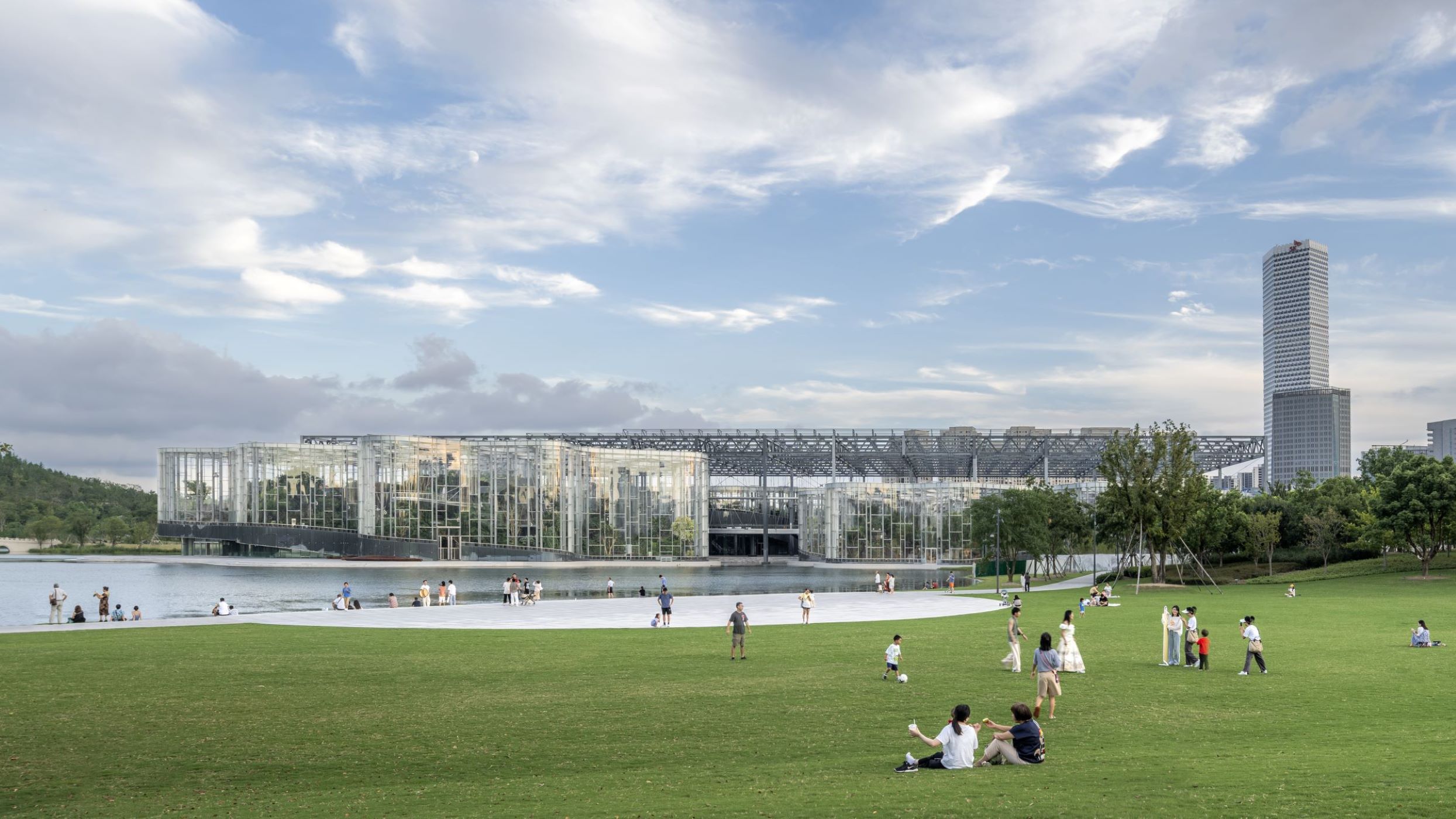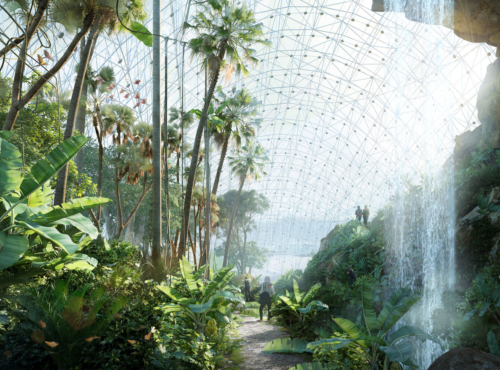China
- Greenhouse
- Landscape Design
- Refurbishment
- Built
The zeitgeist has shifted towards recognizing nature as the essential basis of our living environment. And nature has also moved to the heart of architecture. In recent years, as it has repeatedly addressed the specific task of greenhouse design, DMAA has developed extensive technical and cultural knowhow.
With a population of 23 million, the megacity of Shanghai is the focal point of China’s urban and international development. The sparsely inhabited industrial suburb of Pudong has become home to one of Asia’s most spectacular high-rise skylines, at the heart of which the Expo Cultural Park is situated. But the Shanghai Region is also directly threatened by the consequences of unlimited growth and climate change.
Given biting smogs, water shortages, and rising temperatures, the country’s leaders are looking for solutions that take the form of radical largescale steps – steps that should not only preserve natural habitats but also steer China’s technological and economic efforts in a sustainable direction.
Before its transformation into the Expo Cultural Park, the inner-city recreational area was occupied by a coal-fired power plant and a steelworks. It was then remodeled as the location for Expo 2010. As part of the project for the new Greenhouse Garden, the steel structure of a former industrial hall was used as a geometrical superstructure that was then enhanced by organically shaped pavilions. The twin dualities of industry and nature and tradition and future mark the historical turning point at which Shanghai now finds itself. The municipal administration’s decision to refunction such a huge, centrally-located piece of land as a high-quality leisure area offers clear evidence of the overall trend towards the more intense planting of the core urban zones of Shanghai, one of the largest cities in the world with a subtropical climate.
Address
Shanghai Expo Cultural Park - Guo Zhan Lu
Pudong Xinqu, Shanghai
Competition
1st price
Start of planning
03/2019
Start of construction
01/2020
Completion
09/2024
Gross surface area
41.000 m²
Construction volume
340.000 m³
Site area
47.000 m²
(within the whole Park)
Height
35 m
Number of levels
3
Number of basements
1
Costs
€ 300 Mio.
Project manager
Diogo Teixeira
Project team
Yue Chen, Jurgis Gecys, Thomas Peter-Hindelang, Toms Kampars, Prima Mathawabhan, Sebastian Michalski, Ernesto Mulch, Maximilian Tronnier, Toni Nachev, Marillies Wedl
CONSULTANTS
Coordination
Yiju Ding
Executive planning
SIADR Co.Ltd
Structural engineering
Bollinger + Grohmann ZT GmbH
Energy Design
Transsolar Energietechnik GmbH
Landscape Design
Yiju Ding
Photographer / Movie
CreatAR
Yiju Ding
Movie
© CreatAR
Yin & Yang-
Turning an old steel factory into a sustainable Greenhouse


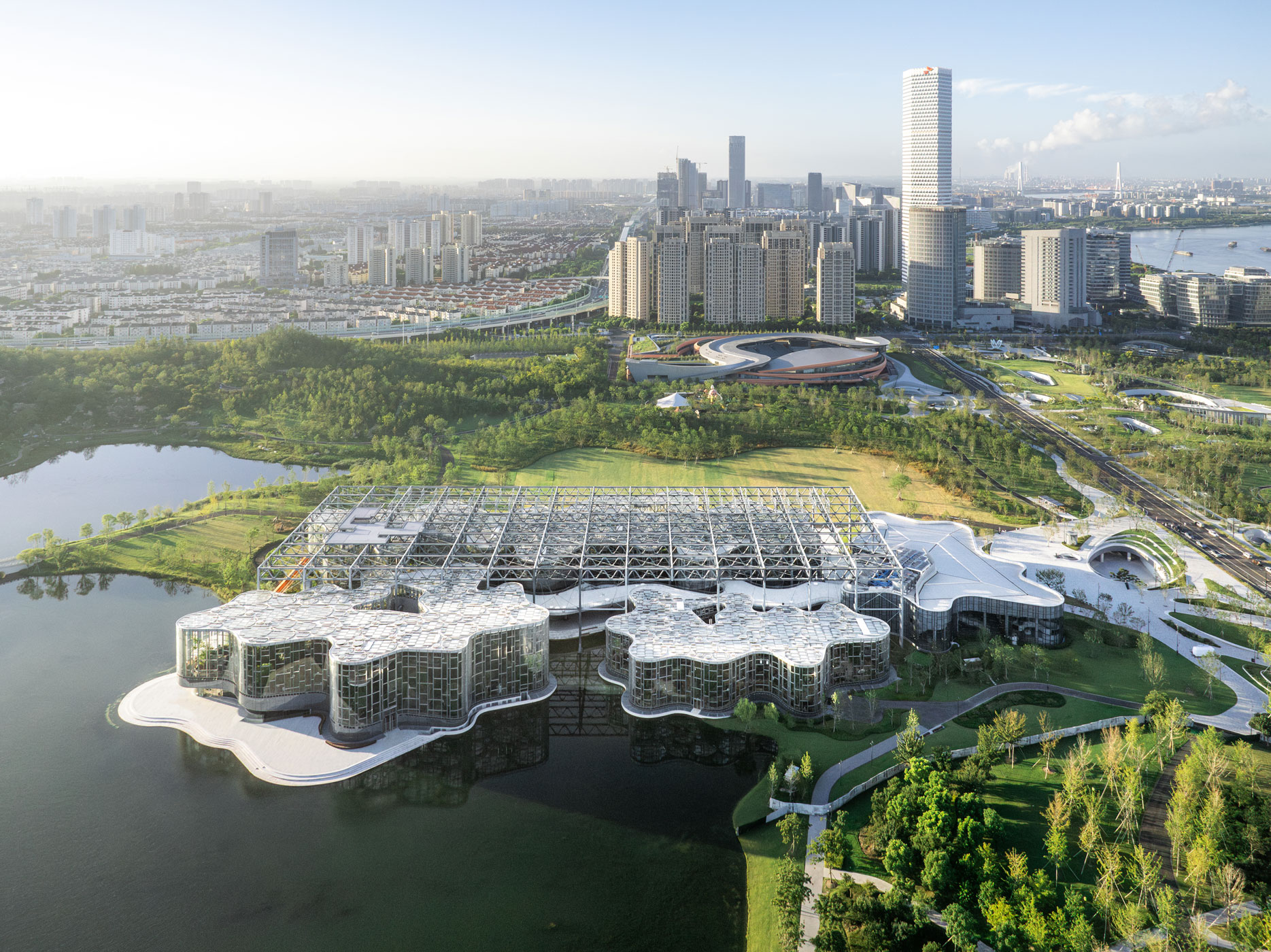
A vision for human-nature interaction in urban environments.

As greenhouses generally consume large amounts of energy, one particular aim of this project was to create a zero-energy building. This was achieved by the use of single glazing – a choice based on simulative calculations that showed that double glazing would be less energy efficient due to the fact that the reduction in heat loss would be more than cancelled out by the impact of the artificial lighting required by the plants.
Opening windows in the perforated roof can be adjusted to permit the natural ventilation and passive cooling that creates the optimal climate for the specific plants. A pool adjacent to the pavilions not only provides cooling but also supplies energy to the greenhouse from PV panels that are located just below its surface.
The first pavilion recreates the radical aridity of the desert, with a sandy and rocky landscape that embodies the home of plants that can withstand drought yet are threatened by extinction in every continent. In contrast, the second pavilion contains the tropical vegetation of the rainforest, while the vertical flower gardens of the final pavilion offer space for travelling exhibitions. The terrace above the pavilions offers an overview of the entire park and the buildings that form the edge of the surrounding urban fabric. Between the three pavilions and the entrance building, and below the listed steel structure, a largescale circulation space integrates the project into the surrounding nature.

The desert pavilion



The Path Forward
There is always a chance for people to take an alternative path and “lose” themselves in the environment.




The network of pathways within and between the greenhouses generates new qualities. By actively exploring this network, visitors pass through each spatial sequence, experiencing a targeted interaction with the built substance. Glazed parapets reveal these guests while gentle gradients speed up or slow down their progress.
The variation in water levels between the desert and the tropical vegetation is taken from nature, while also offering a global political perspective due to the questions about the future availability of water that are being raised by climate change. In this way, the organically undulating form of the facade becomes a leitmotif for not only the internal organization but also the new adaptable relationship between humans and nature.



explosion of the different components of the project
© Bollinger + Grohmann


© Yiju Ding



